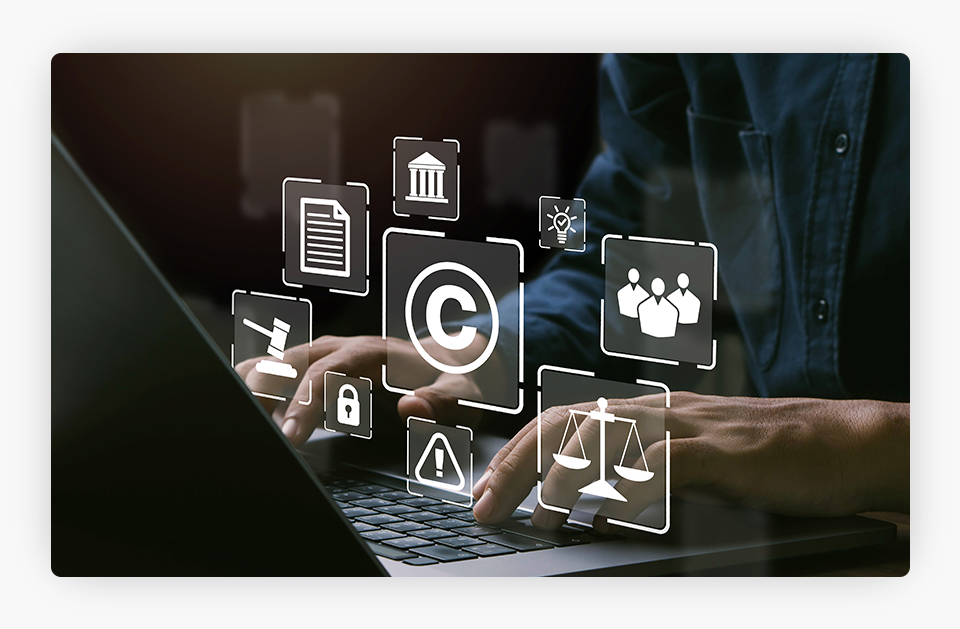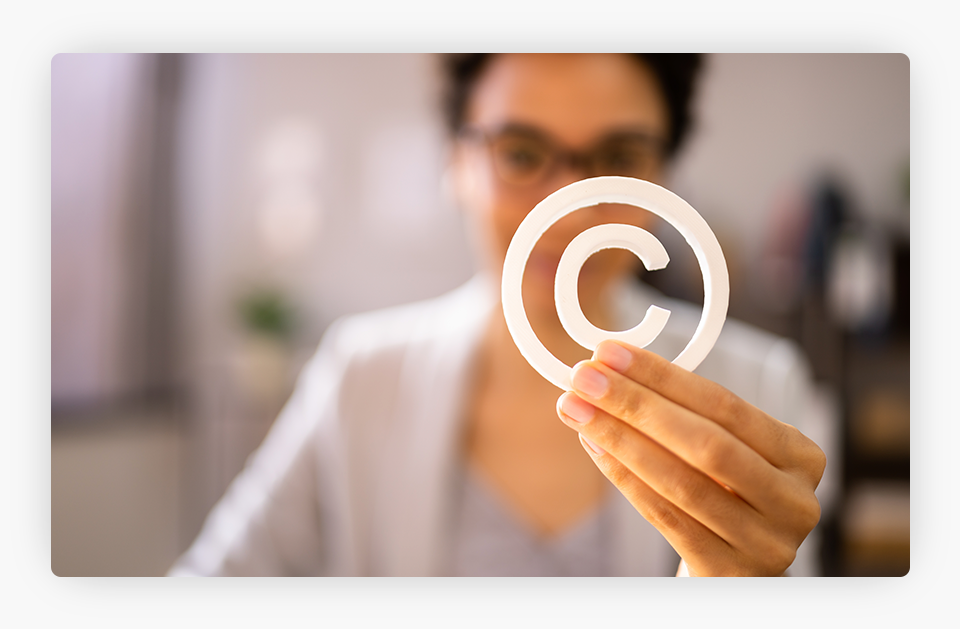We can’t send you updates from Justia Onward without your email.
Unsubscribe at any time.
Patents, copyrights, trademarks, and trade secrets can hold immense value. It’s not always easy to understand the rules that apply to them. Justia provides an Intellectual Property Law Center that sheds light on this sophisticated topic.
People tend to think of “property” as real estate, money, or another tangible asset. But some of the most valuable forms of property are intangible. Disputes over patents, copyrights, trademarks, or trade secrets can make or break a business or an individual entrepreneur or creator. To avoid pitfalls and disruptions, it’s vital to understand how each type of intellectual property works. This is where the Intellectual Property Law Center compiled by Justia can help. It aims to cut through the complexities of this area of the law to provide a readable summary for people who want to know the basics. Here are some common questions to which it offers general answers.

What Does Each Type of Intellectual Property Do?
Patents tend to protect useful inventions, such as machines, processes, or improvements to existing machines or processes. Copyrights generally protect original works of authorship, such as movies, books, paintings, and music. Trademarks are generally words, phrases, symbols, or designs that identify the source of a product or service. Trade secrets often involve methods, techniques, recipes, or formulas that the business tries to keep confidential and that are not generally known or readily ascertainable.
How Long Does Patent or Copyright Protection Last?
For most patents, protection lasts for 20 years. (For design patents, which protect new designs invented for manufactured items, protection lasts only for 14 or 15 years.) In general, a copyrighted work loses protection and enters the public domain 70 years after the author dies if the work was created in 1978 or later. The same term generally applies to a work that was created but not published or copyrighted before 1978. A work published in 1977 or earlier generally is protected for 95 years after publication.
What Makes an Invention Eligible for a Patent?
An invention must meet four core requirements to be eligible for a utility patent, which is the main type of patent. (Different requirements apply to design or plant patents.) First, the invention must involve subject matter that the Patent Act defines as “patentable.” For example, laws of nature are not patentable. The invention also must be novel. Among other things, this means that it was not publicly used or sold more than a year before the patent application was filed. In addition, the invention must have a real use rather than a possible future use. Finally, it must not be obvious to someone with ordinary skill in the field.
What Damages Can You Get for Patent Infringement?
The main types of damages that a patent holder usually receives are reasonable royalties and lost profits. Reasonable royalties are based on the fair market value of the license that the infringer should have obtained from the patent holder for using the invention. Lost profits account for profits that the patent holder would have received if not for the infringement. Expert testimony often helps determine the damages in a patent infringement case.

Which Rights Does a Copyright Provide?
A copyright confers a “bundle” of exclusive rights related to the work. These include the rights to reproduce the work, distribute the work, publicly perform or publicly display the work, and prepare derivative works based on the original work. For a sound recording, the copyright holder has the exclusive right to perform the work publicly through a digital audio transmission. A copyright holder may license someone else to exercise any of these rights, or they may assign one or more rights to someone else, which is essentially like a sale.
When Does the Fair Use Doctrine Apply?
A court will consider four factors in deciding whether a fair use defense shields an alleged infringer. These are the purpose and character of the use, the nature of the copyrighted work, the amount and substantiality of the copied component in relation to the work as a whole, and the effect of the use on the market for the copyrighted work. For example, a defendant who took a significant portion of a work for a commercial purpose may be more likely to face liability than a defendant who took a small amount for an educational purpose.
Do I Need To Register a Copyright?
You can hold a copyright without registering it. However, an owner needs to register the copyright before they can sue for infringement. If they register within three months of publication or before infringement occurs, they can recover statutory damages as specified by the Copyright Act without needing to prove their actual damages. Meanwhile, registering a copyright within five years of publication creates a presumption of validity, which can simplify the task of proving liability.

Which Types of Trademarks Are Protectable?
Fanciful, arbitrary, and suggestive marks are generally protectable, while descriptive marks are sometimes protectable. Fanciful marks have no meaning beyond their use as a trademark. Arbitrary marks are pre-existing words that do not relate to a characteristic of the product or service. Suggestive marks require some imagination or mental effort to understand the nature of the product or service. Descriptive marks clearly describe the product or service. These can get protection only if they have a secondary meaning because consumers associate the mark with a certain source. Generic terms simply identify the product and cannot get trademark protection.
How Do I Prove Trademark Infringement?
To succeed in a trademark infringement claim, you will need to show that you have a valid mark and that the defendant’s mark is so similar that it causes a likelihood of consumer confusion. In other words, consumers might think that the defendant is connected with the plaintiff or that they are providing the same products or services. A court will consider factors such as the similarity of the marks, the similarity of the products or services, the strength of the plaintiff’s mark, any evidence of actual confusion, and the defendant’s intent.
What Should a Non-Disclosure Agreement Contain?
A non-disclosure agreement should identify the types of information that must be kept confidential. It must clearly state the obligations of the person or entity given access to the information. The agreement may provide a certain time period during which confidentiality must be maintained. It also may contain exclusions for types of information that the agreement does not protect.
Final Thoughts
Inventors, artists, and business owners rely on various forms of intellectual property protection in pursuing their careers. A misstep or oversight can have devastating consequences. When the stakes are high, there is no substitute for consulting an intellectual property lawyer who can provide guidance tailored to a certain situation. In the meantime, the Intellectual Property Law Center offers a readable overview of some key concepts in this area. Like the other Justia Legal Guides, it furthers our mission of making the law free and accessible to all.
Related Posts